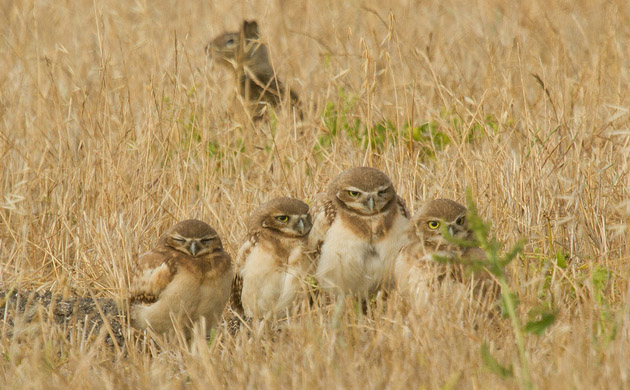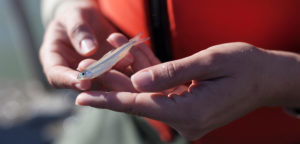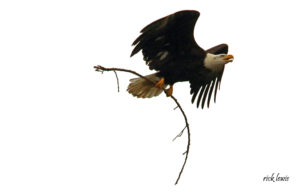The western burrowing owl (Athene cunicularia hypugaea) doesn’t ask for much. Commonly found alongside concrete culverts and medians, the burrowing owl requires only a few basic ingredients to survive Californian urban settings: open, well-drained soil; short, sparse vegetation; and underground burrows.
But Bay Area biologists say even those simple needs are threatened by a new land exchange between the city of Dublin and the U.S. Army. Under the exchange, 189 acres of open grassland now part of the Camp Parks Reserve Forces Training Area will be converted into six major development projects, including new military facilities, residential homes, and commercial properties. The developments threaten one of the few remaining colonies of burrowing owls in Alameda County.
“Trying to preserve the burrowing owl has been the most frustrating aspect of my career as a conservationist to date,” said Craig Breon, past director of Santa Clara Valley Audubon Society, in an email. “It wouldn’t take too much to save these guys, and we’re just not willing to do it.”
In 2003, the Center for Biological Diversity and its allies were denied a petition to protect the California population of burrowing owls under the California Endangered Species Act. The petition showed that breeding owls had lost an estimated 60 percent of their former range in California from the 1980s to the early 1990s, but the decision by the state Department of Fish & Game (DFG) stated that owl populations in the Imperial and San Joaquin Valley were healthy.
Jeff Miller, conservation advocate at the Center of Biological Diversity and one of the petition’s authors, said the decision assumes that there will be repopulation of declining or extirpated populations by Imperial and San Joaquin Valley populations — but no source populations have been found to exist.
“Once lost,” Miller said, “forever lost.”
Breon, who also helped author the petition, said opposition to listing the owl as endangered is a result of the owls preferring valley grasslands that are highly desirable habitat for development.
Sandra Menzel, a wildlife biologist with resource consulting group Albion Environmental, said that in the Bay Area, populations of burrowing owls were and still are rapidly declining.
To try and help the remaining owls, biologists have studied a number of development mitigation strategies. The most likely strategy for Camp Parks, transplanting or relocating owls to another habitat, has one of the worst outcomes.
In one recent paper, Lynne Trulio, a professor of environmental studies at San José State University, followed 27 relocations in Northern California and found that 63 percent of the owls disappeared, 26 percent flew back to their original site, and 7 percent bred successfully in the new habitat; the rest were subject to predation or unsuccessful breeding.
In the Camp Parks area, SunCal, one of the nation’s largest land developers, is planning six major development projects within the 189 acres, including an elementary school and 2,000-home neighborhood.
SunCal representative Joe Aguirre told the news site Around Dublin that SunCal plans to construct habitat away from the project to direct the owls to viable habitat. A draft environmental impact report released in June does not specify the habitat or location.
Dublin Mayor Tim Sbranti said development will not only provide a connection between the eastern and western parts of Dublin, but will include a 30-acre city park. Sbranti said open-space corridors within the city park will allow long-term preservation by preventing future indeterminate development.
“The development at Camp Parks is a win-win for everyone – the Army gets new facilities in exchange for their land, the city will become connected rather than divided by the base, and the owls will be provided trails linking an open space corridor [in the city park] to the adjacent grasslands,” Sbranti said.
Menzel said managing undisturbed habitat adjacent to the project provides the best hope for burrowing owls at Camp Parks. The “Burrowing Owl Survey Protocol and Mitigation Guidelines” states that if off-site mitigation is necessary, at least 9.75 acres of suitable burrowing owl habitat per pair or single bird should be preserved.

In California, burrowing owls feed mostly on crickets and meadow voles, and require the presence of the California ground squirrel (Otospermophilus beecheyi). Despite their name, burrowing owls do not dig burrows but benefit from the efforts and abandoned burrows of California ground squirrels.
The larger the area of habitat, the easier the owl lives. Burrowing owls are generalist eaters, so higher biodiversity means more options. The owls have an ingenious method of passive prey capture: After lining the entrance of their burrows with large mammal dung, the owls sit and wait for dung beetles to arrive then snatch up the pilfering insects as they try to roll away the “treasure.”
“They are a hoot to observe,” Menzel said. “It is an absolute privilege to have them in the neighborhood and any local extinction is an immense loss.”
Emily Moskal is a Bay Nature editorial intern.





